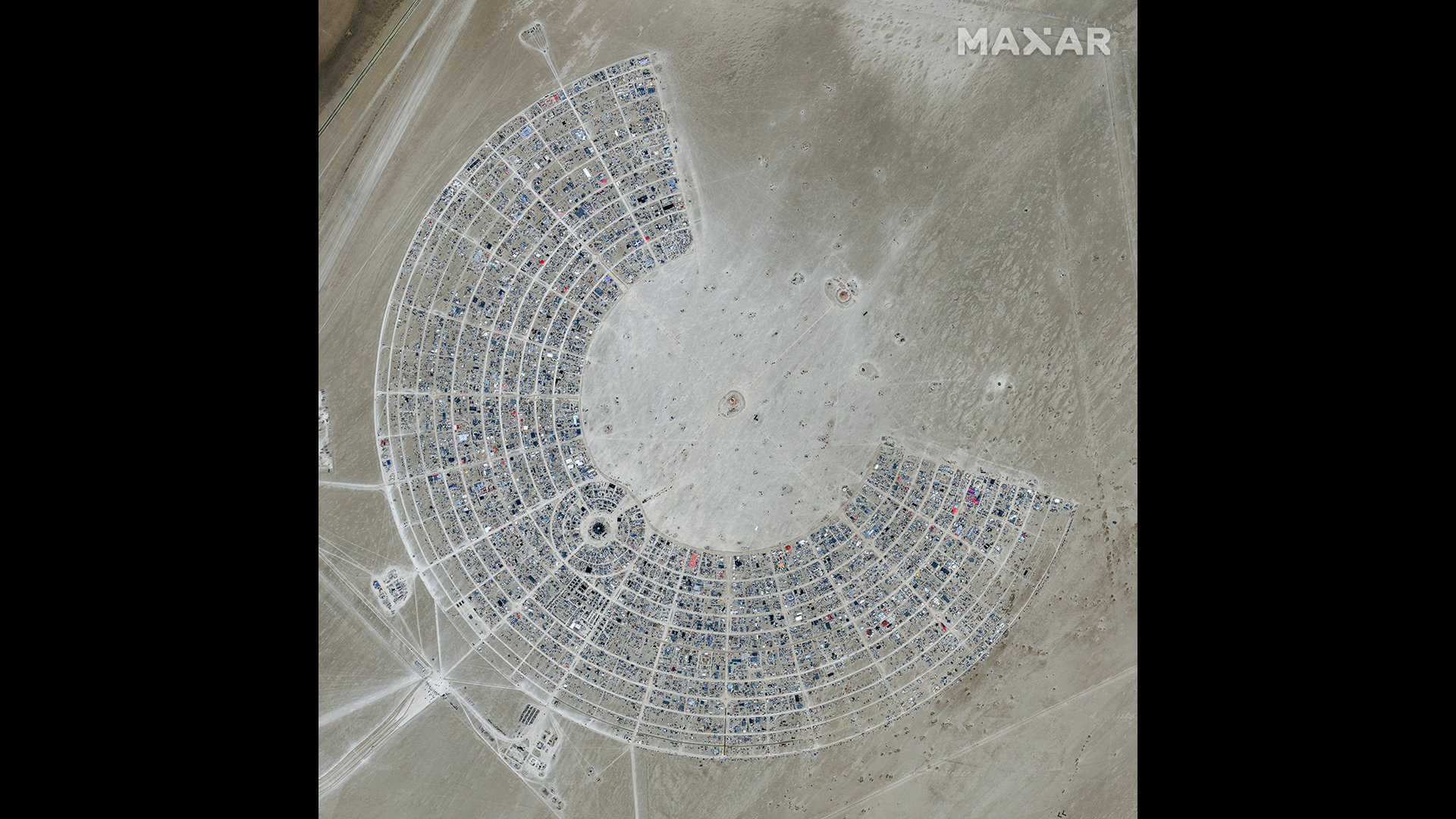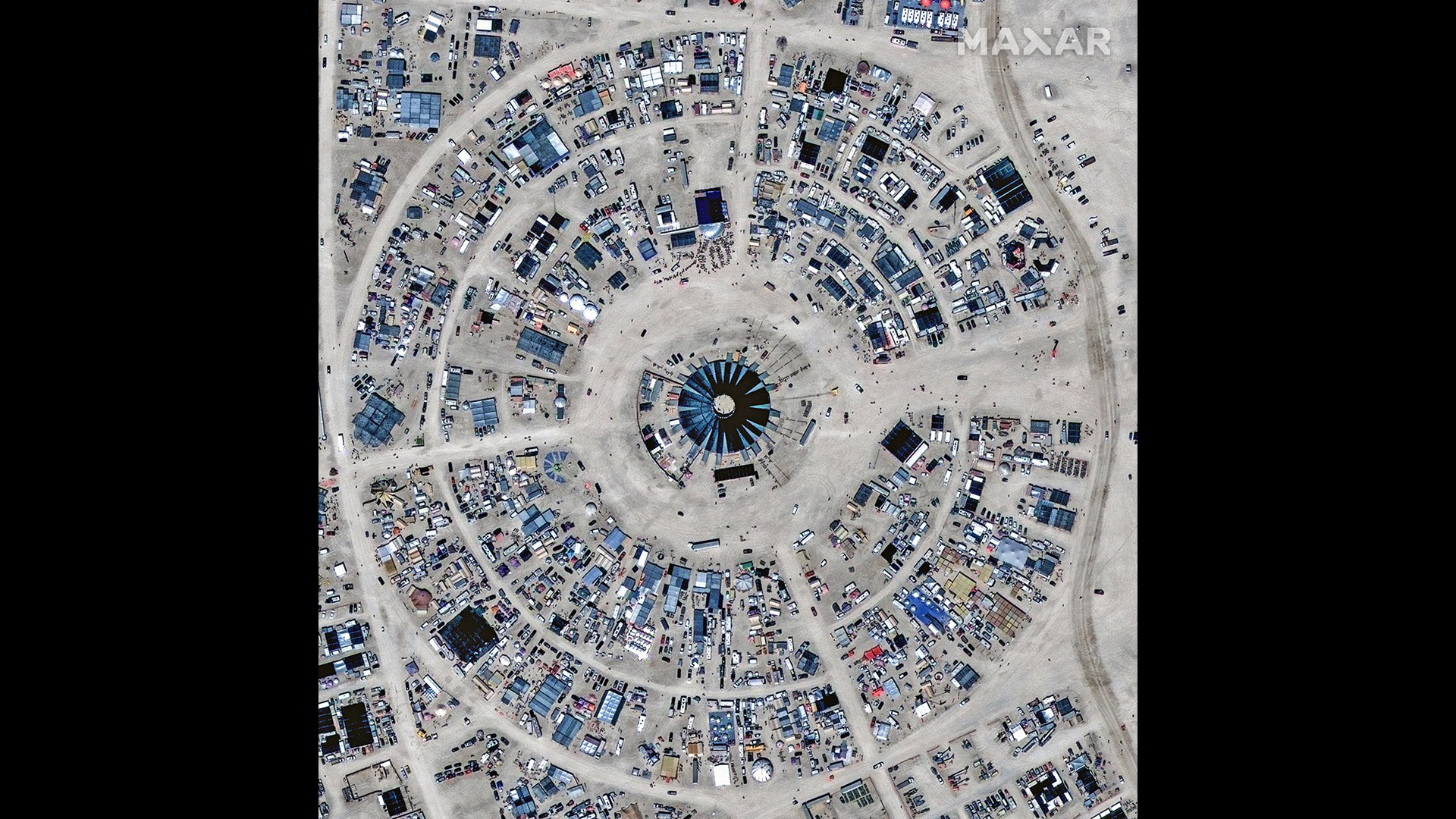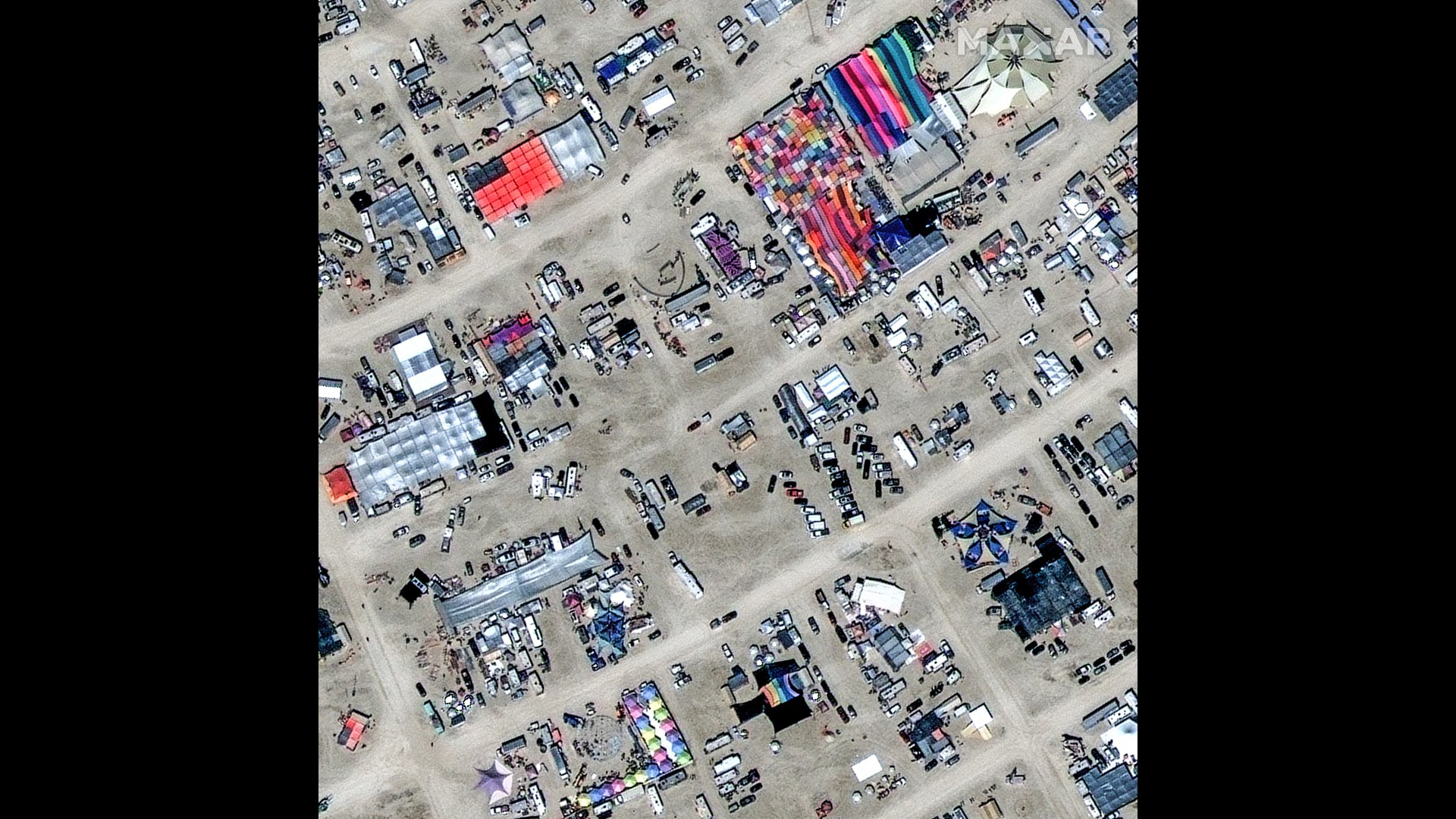
Satellites watched as a temporary city sprang up in the Nevada desert, where the famed Burning Man "radical self-expression" festival kicked off on Monday (Aug. 28).
One spacecraft even caught a glimpse of some sort of fire burning on the city's main plaza, although it wasn't Burning Man's main fire, which will close the festival next week.
Satellites of the U.S. Earth-observation company Maxar Technologies took daytime images of the makeshift Black Rock City, showing a circular footprint resembling an ancient Greek amphitheater. In the middle of the city is a round plaza surrounded by a series of concentric circles delineating the city's "streets," around which cars are parked and tents pitched.
Maxar's spacecraft took those images on Sunday (Aug. 27), one day before the official start of the festival, which will run until next Tuesday (Sept. 5).
Related: Burning Man 2019 spotted from space (satellite photos)



The European Earth-observation satellite Sentinel-2 flew over the city on the same day, catching a glimpse of some kind of fire burning in the middle of the main plaza. The Burning Man festival is named after an effigy that is ceremoniously burned toward the end of the festival on the night before Labor Day, which this year falls on Sept. 4. The fire caught by the Sentinel-2 satellite therefore couldn't be that big fire just yet.
"Sentinel2 seems to show some kind of fire 😎🔥. Mix of greyscale visible light and SWIR [short-wave infrared]," an Earth-observation researcher who goes by the moniker kosmi said on X, formerly Twitter, under, in a post on Monday that shared the image.
Burning Man is an annual event held in the Black Rock Desert in Nevada some 120 miles (193 kilometers) north of Reno. The festival celebrates all forms of "radical self-expression" and "radical self-reliance," which could be described as very unusual forms of art and communal living. Although tickets cost upward of $575, the event lists decommodification and gifting among its main principles.







